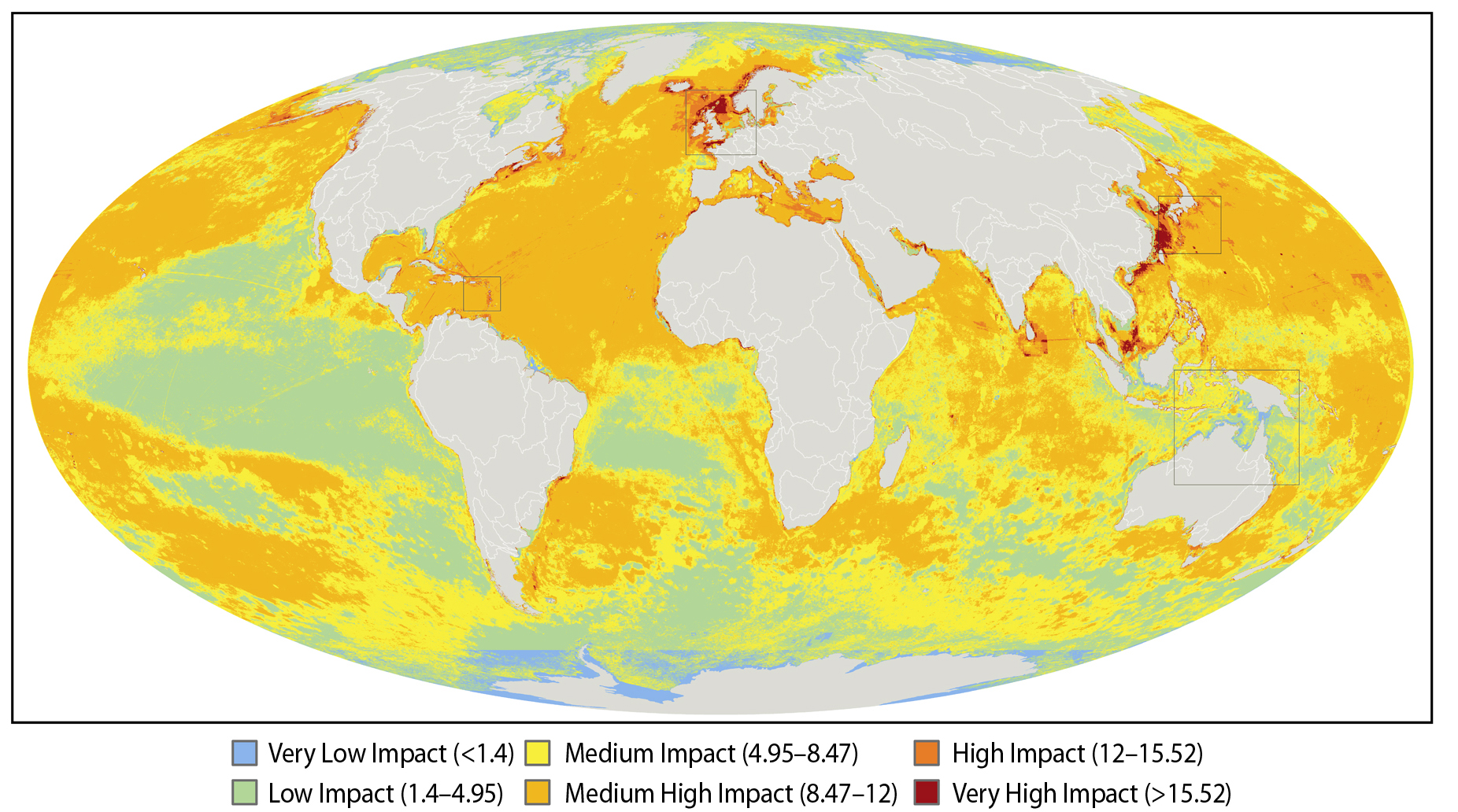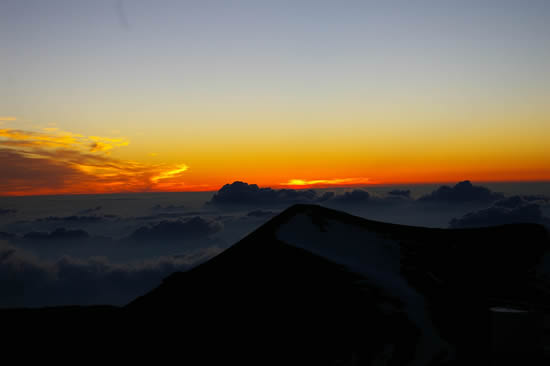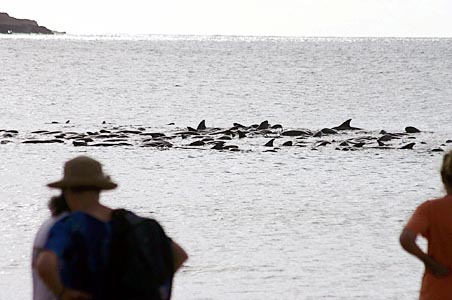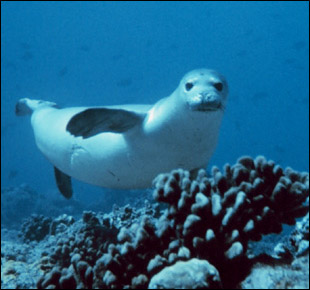Blog
News, updates, finds, stories, and tidbits from staff and community members at KAHEA. Got something to share? Email us at: kahea-alliance@hawaii.rr.com.
- In 1994, elevated sea temperatures killed over 90% of the living corals of American Samoa from the intertidal zone to a depth of 10 meters and fishing catches declined drastically in the wake of the coral death.
- Climate Change will shift rainfall patterns causing prolonged droughts in some regions. Each El Niño event has resulted in water shortages and drought in Papua New Guinea, Marshall Islands, Federated States of Micronesia, American Samoa, Samoa, Tonga, Kiribati and Fiji. More frequent El Niño events also bring an increased risk of tropical cyclones, particularly for Tuvalu, Samoa, Tonga, Cook Islands and French Polynesia.
- The potential socio-economic impacts of climate change on the smaller Pacific island countries were estimated in a series of vulnerability studies. Depending on the worst case scenario (one metre sea level rise), the studies suggest that sea level rise will have negative impacts on tourism, freshwater availability and quality, aquaculture, agriculture, human settlements, financial services and human health. Storm surges are likely to have a harmful impact on low-lying islands.
Holding the Navy Accountable on Two Fronts
From Marti:
The Navy has been on the hot seat lately for the damage it has caused in Hawaii nei. In central and western Oahu, the Environmental Protection Agency and the state got a commitment from the Navy to clean up any remaining contamination at two Superfund sites – one in Lualualei near the naval munitions storage area and the other in Wahiawa. While preliminary investigations have indicated that no immediate threats currently exist at the sites, soil contaminants at the sites include PCBs, volatile organics, semi-volatile organics and metals. PCBs can cause cancer in animals and adversely affect the nervous, immune, and endocrine systems in humans.
“Our agreement with the Navy and the state finalizes the process that the Navy will follow to complete the investigation and clean up of any remaining chemical contamination at both sites.” said Keith Takata, director for the EPA Pacific Southwest Region’s Superfund Division.
The agreement with the Navy is open to public comment. Get your say in now by visiting: www.epa.gov/region09/NavalComputer
Check out the full article at The Hawaii Independent: http://www.thehawaiiindependent.com/hawaii/oahu/2009/04/02/epa-us-navy-agrees-to-clean-wahiawa-lualualei-superfund-sites/
 And, on the South shore of Oahu, controversy is brewing as the state attempts to hold the Navy financially responsible for the carnage of coral from the USS Port Royal grounding in February 2009. Ten acres of ancient coral was destroyed! Chunks as large as cars are still bouncing around on the ocean floor causing further damage.
And, on the South shore of Oahu, controversy is brewing as the state attempts to hold the Navy financially responsible for the carnage of coral from the USS Port Royal grounding in February 2009. Ten acres of ancient coral was destroyed! Chunks as large as cars are still bouncing around on the ocean floor causing further damage.
“There is a critical need for the U.S. Navy to mitigate the damage which has occurred, which continues to occur, and which will get worse with the upcoming south summer swell,” said Laura H. Thielen, chairwoman of the DLNR, in the letter.
“We urge the U.S. Navy to commit appropriate resources to rescue disturbed or destroyed coral, remove or stabilize rubble, and protect loose live coral that has resulted from this incident.”
Here, here!! Systems that ensure the “polluter pays” are a completely reasonable (and actually quite capitalist) approach to addressing damage to our environment. The Navy’s negligence destroyed a significant part of our ocean environment. They should be required to pay for the injury they have caused and do all they can to prevent further damage.
What the Navy does in this situation will be a key indication of what the public can expect from their activities affecting the Papahanaumokuakaea Marine National Monument in the Northwestern Hawaiian Islands (you will recall the Navy plans to intercept chemical-laden missiles over Nihoa – the only home of at least four endangered species and one of the most significant cultural and archeological sites in the archipelago).
Check out the full article here: http://www.honoluluadvertiser.com/article/20090402/NEWS11/904020369/1001
Red-Rover, Red-Rover, Cross on Over
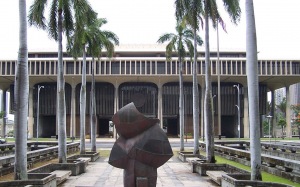
Today is Cross-Over Day at the State Capitol, the half-way point in the legislative process… and the day the overwhelming majority of bills are declared officially dead (until they can be resurrected next session). Here is a run-down of the bills KAHEA is following that are still alive this session. Click on the bill numbers to get the latest update on their status.
GOOD BILLS
SB 1088 - Improves enforcement of the public’s right to beach and mauka access by creating a citizen suit provision. Call Rep. Sharon Har at 808-586-8500 to ask that it be heard before the House Water, Land, and Ocean Committee.
HB 1663/SB 709 - Bans the genetic modification of taro in Hawaii. (Watch these ones closely. Like last year, amendments could turn them against the interests of Haloa, taro farmers, and taro consumers).
SB 701 – Establishes a moratorium on the siting of landfills along the Leeward Coast. This is an important bill to help protect the public health of Waianae Coast residents, unfortunately it has a lot of hearings to get through. Call Rep. Rita Cabanilla at 808-586-6080 to express your support.
SB 86 – Establishes the Makua Valley Reserve Commission to allow for community involvement in the management of Makua Valley. This bill also has a lot of hoops to get through. Call Rep. Ito at 808-586-8470 to advocate for its first hearing.
SB 1199 – Designates certain state waters surrounding the island of Molokai as the Molokai Community-Based Subsistence Fishing Area. Protecting the health of the shoreline is critical to Molokai’s economy welfare, unfortunately commercial fishers and aquarium collectors want to continue to take from these coffers. Call Rep. Calvin Say at 808-586-6100 to ensure this bill gets referred to the Water, Land, and Ocean Committee.
BAD BILLS
HB 1174 - Transfers management of the sacred summit of Mauna Kea to the lease-holder/developer, the University of Hawaii. Public opposition successfully defeated three similar bills earlier this session. Call Sen. Jill Tokuda at 808-587-7215 to urge this bill not be heard. Check out our previous posts to learn way this bill is the best way to undermine protections for Mauna Kea.
HB 1226 – Allows federal preemption of all state and local regulations on genetic modification (except taro). Labelled the Worst Idea of 2009… hopefully it won’t go any farther.
SB 1108 – Extends the effective date of the Aha Kiole Advisory Committee. Having a community-based system for managing our fragile resources is exactly what Hawaii needs, but without adding any additional safeguards to this existing system means it could be misused again the way WESPAC did last year.
HB 640 – Exempts certain developments affecting public rights-of-way (like trails) from completing an environmental impact statement. This totally undermines one of the few opportunities for public oversight of construction in Hawaii. Call Sen. Mike Gabbard at 808-586-6830 to ask it not be heard in the Environment Committee.
SB 1311 – Exempts the University’s Institute of Marine Biology from all permitting requirements for all activities in Kaneohe Bay. Our nearshore waters are our most valuable resource and the research being conducted in them should meet the highest standards of the precautionary principle to ensure that no harm comes to them. Help stop this bill by calling Rep. Calvin Say at 808-586-6100 to ask that it not be heard in the House.
HB 1741 – Raids the Natural Area Reserve System fund to make up for part of the budget shortfall. While the money in this fund is crucial to protecting Hawaii from invasive species, there isn’t nearly enough to make a dent in the budget shortfall. Instead, the state should make the foreign telescope owners on Mauna Kea pay rent for use of state lands… like the law requires.
HB 1712 – This is the same “Right to Fish” bill from years passed that paralyzes the DLNR from taking any management actions to protect Hawaii’s marine resources. If we are really interested in protecting our environment, then the goal should be to give DLNR more tools, not less, to do the job and be held accountable.
Mark your calendars: the next major deadline for these bills is April 9th.
If you want to stay involved, you can sign up for KAHEA’s action alert network by clicking here. You can also get hearing notices on any bill you are concerned about by clicking here. On Oahu, some hearings are aired live on “Capitol TV,” Olelo channel 53.
Now, where did we leave those things?

UH, the Army and NOAA are getting around next week to looking for chemical weapons dumped off the Waianae Coast in the 1940s. A public report released in 2001 by the Army’s Historical Research and Response Team identified over 4,000 tons of dumped chemicals munitions, including hydrogen cyanide bombs, cyanogens chloride bombs, mustard bombs and lewisite.
 In the past, the Army has assured community members that chemical munitions will dissipate before causing any serious damage or that the pressure and cold temperatures of the depths of the ocean will render munitions inert–at least, in theory. In reality, containers corrode over time, releasing the chemicals into the ocean. The longer the chemicals remain in the ocean, the greater the chances for a rupture or leak.
In the past, the Army has assured community members that chemical munitions will dissipate before causing any serious damage or that the pressure and cold temperatures of the depths of the ocean will render munitions inert–at least, in theory. In reality, containers corrode over time, releasing the chemicals into the ocean. The longer the chemicals remain in the ocean, the greater the chances for a rupture or leak.
‘There are a number of avenues of risk associated with this. The highest is to marine life. In small doses chemicals can accumulate in animals and work their way up the food chain. There are also impacts on the reproductive capabilities of some species, in addition to the lethality of higher doses.” – Craig Williams, Chemical Weapons Working Group
Next week’s effort is part of an eventual plan to attempt to remove or destroy in place dumped munitions off the Waianae Coast. The communities along the Waianae Coast have for years advocated for clean-up, over Army objections.
“If you’re telling the community that there is nothing to be afraid of, and that it (ordnance) can stay in the ocean without any consequences, then by the same token you should be able to remove it.” – Colleen Hanabusa, State Senator, 21st District
Star-Bulletin Coverage at: http://www.starbulletin.com/news/20090225_Depth_Chargers.html
killing the canary
From Marti:
I was listening to this on the radio, and the topic of climate change and ocean resources got me thinking.
Effects being felt by islands in the Pacific are often mentioned in the discussion about the health of our oceans as “early indicators” of the affects of climate change. Bleaching and disease in fragile coral reefs supporting marine ecosystems caused by temperture changes. Sea level rise forcing relocations of island residents. Ocean acidification with unknown consequences. Climate change leaves these islands less able to fend off effects of catastrophic storm events by degrading protective reefs. They decimate an important ocean food resources, depriving islands of their ability to maintain food independence.
Instead of clamoring to make change, and make restitution to these people and places, the continents are instead holding up Pacific islands as”canaries in the mine shaft”–harbingers of things to come for other presumably more important places like the continental U.S. or Europe.
The widely publicized NCEAS map of human impacts to the world’s oceans splits the entire Pacific region, and Hawai`i is not shown at all. (To their credit, Hawaii is there–and can be viewed in the KML version of the map, viewable in GoogleEarth.)
As a lifelong resident of one of these “canaries,” I am extremely concerned that the rapid rise in sea level and sea temperature will mean the loss of our islands – our homes, our communities and our way of life. It is likely, if not inevitable, that the hundreds of unique indigenous cultures in the Pacific–which have existed and developed over millenia–will not be able to adapt to catastrophic environmental changes occuring over the space of 50 to 100 years.
What is most frustrating is these catastrophic changes are the product of unsustainable lifestyels and practices of industrialized nations like the U.S. and Europe, not the Pacific, where the impact isbeing the most directly experienced. This occurs in the context of the well-documented legacy of post-contact 19th and 20th century Pacific imperialsm–in which world powers fought for ownership and dominance of Pacific Islands with little or no concern for the people of these places. The effects of this legacy are still keenly felt throughout Oceania.
From the Ministerial Conference on Environment and Development in Asia and the Pacific 2000:
Their report concludes:
“The options for the Pacific islands, other than continuing to berate the industrial nations on their lack of concerted action, include migration, foreshore stablilisation, resettlement and decentralisation to adapt to the impacts of climate and sea-level changes.”
While global climate change is indeed, a global problem, it is a problem with consequences unequally shared.
Add your voice! Friends of the Earth has launched a Climate Equity Campaign, urging action to assist those most impacted by climate change. Check it out here.
What a month for the mountain...
All in the same month! (The good, the bad, and the ugly):
- The “Na Kupuna Council O Moku O Keawe”, the Association of Hawaiian Civic Clubs and the Mayor-Elect for Hawaii Island came out in support of protecting Mauna Kea from uncontrolled telescope construction. (Maika’i!)
- Proponents moved forward with plans to seek the construction the new, massive Thirty Meter Telescope proposed for Mauna Kea, despite the fact that there is NO court-mandated mangement plan in place to protect cultural and environmental resources of the mountain. (Bad)
- The Land Board agreed to hand-over management authority of the Natural Area Reserve on Mauna Kea to the proponent of all the telescope construction on the summit: The University of Hawaii. (Ugh. Lee.)
On this last item, over 400 of you submitted letters to the Land Board opposing this give-away.
But with glossy photos of the sacred summit and empty promises to better protect the unique resources of the summit, the University’s self-appointed advisory group called the “Office of Mauna Kea Management” lulled Land Board members into believing the University has the expertise and motivation to protect the Natural Area Reserve on Mauna Kea.
The community knows better. The University’s presence on the summit has only led to 40 years of over-development, loss of native habitat, and interference with traditional cultural practices.
The Reserve should not be managed by the University in any way. The mission of the Mauna Kea Reserve is to protect the natural and cultural resources of the area, which is in direct conflict with the University’s mission to expand telescope activities on the summit. In fact, the Reserve was established and removed from the University’s control in 1981 precisely because the significant resources there needed more protection from the University’s telescope construction.
The Reserve on Mauna Kea protects a unique and threatened mountainous desert habitat and Hawaii’s only alpine lake, Lake Waiau. The Reserve includes the largest adze quarrry in the Pacific, ancient and modern burials, and Queen Emma’s shrine. These are public trust lands–Hawaiian lands held by the state in public trust for the people of Hawaii. Protecting this area needs management by experts in land conservation and cultural resources, not telescope construction.
The University has an appalling record of protecting resources while it constructed over 50 telescope and support structures on Mauna Kea. A 2005 EIS confirmed that the cumulative impact of 30 years of telescope activity on the cultural and natural resources of Mauna Kea has been “substantial, adverse and significant.” And this trend continues today, despite the mantra there is “a new management paradigm” on Mauna Kea. Just as it has done many times before, the University is currently pushing to draft a management plan on its own terms, not the community’s, while at the same time entertaining the construction of a new massive telescope on the last pristine plateau of Mauna Kea.
The University has long sought more direct control over the mountain to further its long-standing financial interest in developing the summit for telescopes. This week, the Land Board’s decision brought the University one step closer to consolidating its control over the summit.
But there are many opportunities coming up to reign in the University and telescope activity on Mauna Kea. Stay tuned to help out in the effort to uphold the protections already on the books for Mauna Kea. In January, we expect the University to once again seek the Legislature’s approval to change the law to allow continued telescope expansion on the summit. The University has tried and failed many times before to command complete control over the summit, but each time the community has successfully educated decision-makers on good policy-making and upheld the protections for Mauna Kea.
Let’s get ready to do it again this year!
self help: restoring stream flow.
From Alan Murakami of the Native Hawaiian Legal Corporation, on behalf of East Maui Taro farmers and Na Moku Aupuni O ko`olau Hui:
Background. The law provides for various appropriate remedies for dealing with and managing serious conflicts over uses of stream water. The biggest conflicts over stream water uses have festered for years because of the massive diversions of East Maui streams by East Maui Irrigation Company for decades. EMI diverts as much water for its plantation uses in central Maui as the average amount that all of O`ahu consumes. The biggest conflict involves the water EMI is taking illegally from streams that feed taro patches and support native stream life vital to the preservation of Hawaiian traditional and customary practices in the cultural landscapes of Wailuanui and Honopou Valleys.
State Agency Delays. After 7 years of patiently waiting for the implementation of the appropriate administrative remedies theoretically available to it, Na Moku Aupuni O Ko`olau Hui’s leadership has been repeatedly frustrated by the inaction of both the Board of Land and Natural Resources and the Commission on Water Resources Management in performing its public trust functions designed to protect the public interest and the water rights of East Maui taro farmers and subsistence gatherers.
Those functions are based on the presumption that these agencies will respect and enforce clear law on water rights held by these farmers and gatherers, which are explicitly protected by the Hawai`i Constitution, the state Water Code, and a long line of water case law. These laws not only respect these practices of these cultural practitioners, but provide the basis for demanding that EMI demonstrate the ABSENCE of injury to these practitioners BEFORE diversions are allowed. Despite holding all the legal advantages of these laws, the BLNR and the Water Commission have delayed, without explanation or justification, the timely implementation of these laws, leading to chronic and severe cultural and monetary damages amongst farmers and gatherers trying to enforce their rights.
Frustration. For example, the CWRM has, without explanation or legal justification, delayed action on Na Moku’s pending request to restore stream flows to support constitutionally protected water rights of taro farmers and subsistence gatherers since 2001, although the governing statute demands action within 6 months. Similarly, like its sister agency, the BLNR has allowed EMI to continue diversions from East Maui without regard for these same farmers and gatherers, even after a year since it supposedly acted to direct its staff to protect the water rights of those affected. The DLNR has failed to fully implement the year-old order of the BLNR, which was designed to provide farmers immediate interim relief from the effects of the existing EMI diversions.
Self Help. On July 9, 2008, taro farmers observing water being improperly diverted from Wailuanui Stream unilaterally released water from EMI diversions. The affected practitioners could not wait any longer, having suffered failed taro crops due to insufficient irrigation water, while EMI diversions took the water that would have savedand supported their crops. This exercise of their constitutional rights did not follow the procedure outlined in either agency’s timetable for action.
Nevertheless, the releases from EMI’s diversion works are entirely consistent with the continuation of traditional and customary practices followed by their ancestors for growing taro and gathering from the streams. It is just that the BLNR and CWRM did not, and apparently chose not to, promptly protect the superior water rights of these practitioners as the law would otherwise require. Their failure to timely implement the law directly resulted in the level of frustration felt by all practitioners in East Maui who have attempted to patiently wait for the water to which they are entitled in the affected streams.
Na Moku position. The taro farmers and subsistence gatherers who took this unprecedented action in the midst of the delayed proceedings did so without prior approval of Na Moku. Na Moku has continued to make itself available to state agencies, in all available administrative processes, in efforts to seek the orderly restoration of streams illegally diverted by EMI. However, it cannot and does not condemn the unilateral releases of water into the streams last week by taro farmers frustrated by long, and unexplained, delays by state agencies. After all, tenants of an ahupua`a do have the reasonable right to access areas within the same ahupua`a to continue their traditional and customary practices, including taro growing and subsistence gathering.
Na Moku affirms its belief that these releases reflect the reasonable and overdue exercise of these rights, protected under the Hawai`i Constitution, statutes, and case law, with which responsible state agencies cannot and should not interfere. This responsibility for this resort to self help rests entirely with the BLNR/DLNR and the CWRM. Na Moku and the taro farmers who are now acting are all frustrated by these agencies failure to act timely enough to save their taro crops. Moreover, successful taro farmers contribute heavily to enhancing Hawai`i’s food supply, its food security and long-term sustainability. Each agency should not exacerbate building tensions by any heavy-handed means to reacting to these farmer actions. The farmers are only reacting to belated processes each agency has not timely nor properly implemented.
In the spirit of moving forward in this unprecedented circumstance, Na Moku stands ready to cooperate with the CWRM and the BLNR/DLNR to continue any reasonably prompt process to assure that the rights of its members are respected and timely enforced.
Bombs Away! RIMPAC's Back
From Marti:
RIMPAC officially started on Sunday, meaning you can expect beach closures, random explosions, mass strandings, and displays of excessive military force throughout the month of July in Hawaii. Remember, RIMPAC is the bi-annual demonstration of U.S.-occupation that brought us the “Hanalei Bay Incident” in 2004, when 150 melonhead whales attempted to strand themselves because of the Navy’s use of high-intensity active sonar AND the unexplained nearshore explosion that shook the windows of Ewa Beach residents on Oahu in 2006.
This year we can look forward to 150 vessels and 20,000 troops from U.S.-backed militaries — like Russia, South Korea, Australia, Japan, and Peru — engaged in all kinds of wargames, such as assault landings, target practice with live rounds, and high-intensity active sonar.
To move forward with these (and all) exercises as originally outlined in the Navy’s giant range expansion plan, the Navy had to do *something* about the pesky limitations placed on those exercises by the State of Hawaii under the Coastal Zone Management Act (CZMA). This federal law was passed to encourage coastal states to do more to protect their precious coastal resources, including giving these states unique authority to require federal agencies abide by state coastal protections.
Under this unique federal law, the State of Hawaii said the Navy had to do two very reasonable things related to active sonar:
1. In nearshore waters, don’t let the active sonar go above 145 decibels because this is widely accepted (even by the Navy) to be a safe level for marine mammals and humans;
2. In all other situations, abide by the conditions required by Judge Erza in the Federal District Court.
It’s not just that the Navy said “No, we don’t have to follow your stinkin’ coastal protections,” but that the Navy enlisted other government attorneys to say “no” for them in a way that would have undermine all of the cooperative state-federal partnerships set up to protect U.S. coastal resources.
I say “would have” because the legal opinion the Navy ended up with is so poorly argued that it probably won’t have much affect. Of course, it will probably take more court action at some level to sort that out.
The two basic reasons why the Navy’s legal game of Twister fails is:
1. It relies on a court opinion that was vacated, meaning the judge revisited her decision and changed her mind based on new evidence or arguments.
2. The new argument that changed the judge’s mind was that the Endangered Species Act actually says states do, in fact, have the authority to protect endangered marine species to greater extent than the federal government. And it’s well accepted that the Endangered Species Act trumps the Marine Mammal Protection Act when it comes to endangered marine species.
Sigh.
We’ll continue to keep you updated on this saga. In the meantime, you can send your thanks to the State Planning and Director Abbey Mayer for standing up for coastal protections in Hawai`i nei.

